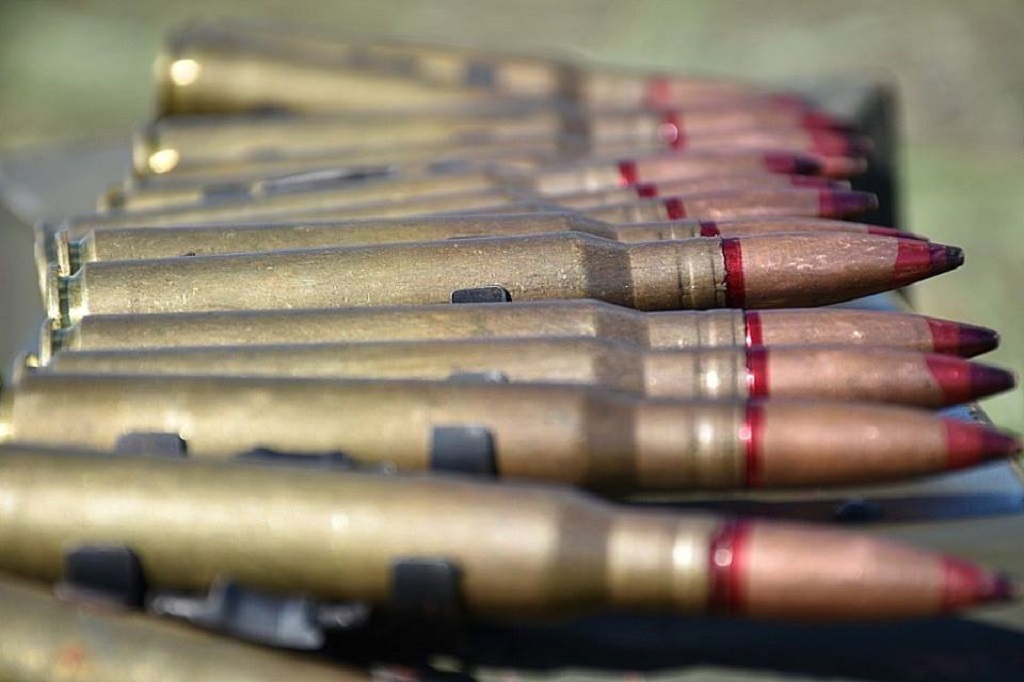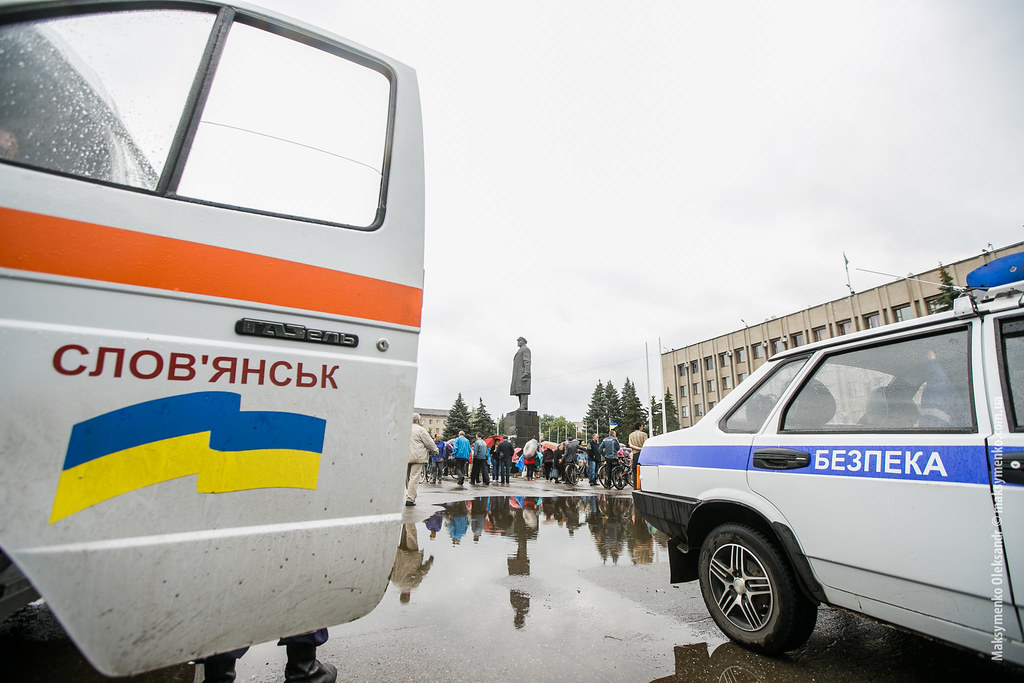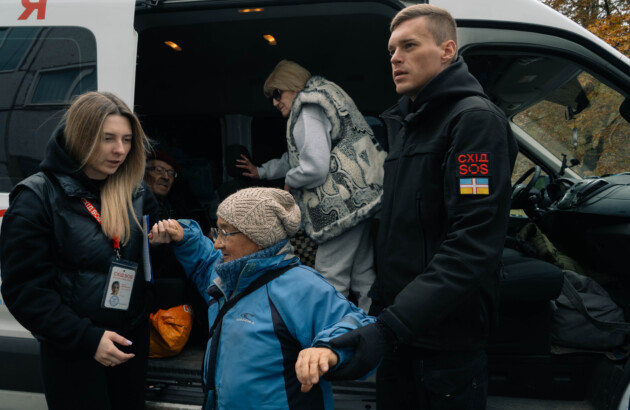Resistance, anxiety or hope? East Ukrainian civil society views on the Steinmeier formula
As people take to the streets to demonstrate against German-led plans for stopping the war in Donbas, the views of civil society actors in east Ukraine are crucial.
Source: openDemocracy, author: Igor Mitchnik

This month, thousands of Ukrainians have been demonstrating against the so-called «Steinmeier Formula». Back in 2016, in order to overcome the impasse over the implementation of the Minsk agreements, Frank-Walter Steinmeier – then Germany’s foreign minister and now president – suggested a step-by-step plan to halt the war in Donbas by preparing the ground for elections in the non-governmentally controlled areas (NGCA). According to this plan, elections were supposed to be held in line with Ukrainian legislation and monitored by OSCE election missions. Steinmeier also proposed that the so-called «Luhansk and Donetsk Peoples’ Republics” (LDPR) receive temporary special status during these local elections, which would only become permanent when OSCE observers declared them to be free, fair and transparent.
More than five years since the beginning of the war in East Ukraine, the decision by Volodymyr Zelenskyy’s government to implement the «Steinmeier formula» may well give the gridlocked conflict – which has caused the death of more than 13,000 people so far – a new dynamic. Indeed, in both his presidential and parliamentary campaign, President Zelenskyy has promised that he will bring peace to Ukraine. Yet the new president’s decision to hit the ground running by confirming that he accepts the plan has caused controversy all over the country.
In an attempt to calm the situation and defend himself against public accusations of giving in to Russia, Zelenskyy insists that he has not capitulated on any «red lines». In line with the Ukrainian position in 2015, when the Minsk agreements were signed, Zelenskyy confirmed that elections can only take place in the NGCA when Ukraine regains full control of its border with Russia, during a stable ceasefire and after the Russian-backed separatists and armaments disengage.
In doing this, the Ukrainian government wants to ensure that it will have full access to the areas outside Kyiv control and that they can permit pro-Ukrainian candidates to campaign in these elections as well. Russia insists, however, that the NGCA should receive special status first – only then should elections go ahead in these territories. Under these circumstances, official Kyiv does not believe that free elections would be possible at all.
Pavlo Kirilenko, Head of Donetsk Regional State Administration, appointed under Zelenskyy in July 2019, has defended the President’s decision. «The process of disengaging the troops from the conflict line is intended to secure the lives and health of both soldiers of the Ukrainian Armed Forces and prevent threats to the civilian population living in the frontline area,» he stated during a meeting with journalists in Sloviansk on 17 October.

Whichever interpretation of the formula eventually wins out, Moscow insists that Kyiv signs the «Steinmeier Formula» as a precondition for further negotiations at the Normandy summit, which involves leaders of Germany, France, Russia and Ukraine – and in which Russian President Vladimir Putin has not participated in since March 2018. The last meeting was held in Berlin in October 2016.
Indeed, Kyiv and Moscow interpret the formula – and, in particular, the order of the steps to be taken – strikingly differently. While the social and political uproar caused by Zelenskyy’s recent endorsement of the formula continues in Kyiv, activists permanently working and living in the region directly affected by the gruelling conflict share their individual assessments of the impact of the proposed plan on their region.
«To nurture a democratic culture in the NGCA would be a colossal task»
“It would have been necessary to implement this formula back in 2016, immediately after it was proposed,» Oksana Stupak, deputy head of the Sloviansk-based NGO Youth of East Ukraine, says. Stupak explains that she is tired of seeing all the depressed faces of the people, who are constantly aware of how close the war is. «If an agreement is made on both sides about a special status and this restores peace, and ends the daily death toll, I will fully support it,» she says. «I support finding a compromise, in which every side has to make concessions in the name of peace.»
Stupak is convinced that this kind of compromise is an inevitable precondition for restoring social and economic stability in Ukraine. Yet she concedes that a fair election will be difficult considering the five years of anti-Ukrainian propaganda the people in NGCA have been exposed to on a daily basis. To nurture a democratic culture in the NGCA ahead of the proposed elections would be a colossal task for the still fairly weak civil society activists in the Donetsk and Luhansk oblasts, yet an inevitable one. «It is important to verify whether the occupied territories are actually ready for elections complying to the Ukrainian law,» Stupak says.
Thinking about the proposed plan, Olga Altunina recalls her regular train rides from Sloviansk, in Donbas, to the Ukrainian capital Kyiv. Altunina, who works in Sloviansk as a project-coordinator for the NGO Kyiv Dialogue, calls this regular railway connection «the train from war to peace».
«I meet a lot of people from the non-governmental controlled territories on this train,» she says. «Many are frightened to live there, but they also say that they are starting to get used to the situation. So who do you think would they vote for in free elections? Of course they’ll vote for those candidates who have stayed with them over the last five years.»
Three major political forces
Arkadiy Petrosyan, an activist, and Sloviansk-based journalist Dmytro Zhuravlyov agree with Oksana Stupak’s perception that people on both sides of the contact line are tired of the war. Both Petrosyan and Zhuravlyov say that the minimum they would expect is that Ukraine regains full control over the border. «Otherwise, it will be impossible to ensure democratic elections and the security of citizens,» Petrosyan, 22, tells me.

The war may be close physically, but the fairly complex political level of the discussions on the formula seems far-off for most people in the cities of the Donbas. «People in the cities of Donetsk region in general do not understand what the Steinmeier formula is about,» Zhuravlyov explains.
In Sloviansk, a city of roughly 120,000 people which is 70 kilometres from the frontline, around 50 people went to demonstrate against the plan on 6 October – an insignificant number when compared the rallies in other cities much further away from the contact line. In Kyiv, estimates went up to around 20,000 protestors in three rallies altogether – the biggest coming on 14 October, the national Day of Defender holiday. The people demonstrating in Sloviansk were adherents of all kinds of political and social groups: an active soldier demonstrated alongside people who voted for opposite political camps, such as former president Petro Poroshenko as well as Volodymyr Zelenskyy.
Overall, Zhuravlyov sees three main socio-political groups in the region – and he considers two significant. Those that Zhuravlyov calls pro-Russian leaning want the Ukrainian troops to disengage without any special conditions. They do not mind that the conflict could end on terms favourable to Russia and the so-called LDPR. The pro-Ukrainian population wants to regain control over Donetsk and Luhansk NGCA without any special status for the occupied territories or privileges to the current illegal leaders of LDPR. The «radical patriots», on the other hand, want the army to take control of the occupied territory by military means. «The number of the latter in the Donetsk region is marginal,» Zhuravlyov qualifies, «I think no more than 2-3% of the total population.»
Elections or their simulation?
That stark regional differences in the assessment of the military conflict prevail in Ukraine more than five years after the conflict started is no secret. A recent survey carried out by the Rating sociology group suggested that in the east of the country – which in the poll consists of the Donetsk and Luhansk regions and parts of the neighbouring oblasts – around one third of the population would accept the Steinmeier formula in order to resolve the Donbas conflict. In the west and centre of the country, the level of support for this initiative does not exceed 14 percent. Beyond that, in the centre and west of the country 70 percent consider Russia as the aggressor in this conflict, with only 40 percent surveyed in the east of the country sharing this assessment. This stands in sharp contrast to the nationwide figure of 68 percent seeing Russia as the aggressor.
The mental distance to the political dimension of the conflict feels different in cities such as Zolote, in Luhansk region, located directly on the demarcation line. The potential withdrawal of troops from Zolote, as well as from Petrivske, is a major point of contention in the discussions about the Steinmeier formula – and is a major demand of president Vladimir Putin. The Ukrainian army is currently stationed in Zolote. The neighboring village Katerynivka, located on the outskirts of Zolote-4, is the last village in Luhansk oblast controlled by the Ukrainian military. On 7 October, the Ukrainian army and LPR fighters were supposed to start a simultaneous disengagement in Zolote. After that, the village of Katerynivka would find itself in a so-called «grey» or uncontrolled zone.

Yevhenii Vasyliev regularly works in Zolote and other parts of the Luhansk region with the charitable organisation Vostok SOS, which has provided assistance to people affected and displaced by the conflict since the very beginning of the conflict in 2014. He coordinates monitoring programs with Vostok SOS, and travelled to Zolote on 10 and 11 October. «Many people there fear for their lives after the Ukrainian soldiers will leave,» he says. «Particularly pro-Ukrainian people are afraid that the Russian-backed separatists will return and persecute them.»
Vasyliev and his colleagues are concerned that the disengagement could worsen the humanitarian situation of people living in frontline locations, as they would suddenly find themselves living in a grey zone. This would hamper their access to water, food, medicine, but also to administrative social services such as ambulances or police control, as well as to pensions. As of 26 October, the planned withdrawal of troops was postponed, because of the continued shelling in these locations.
In an open letter to President Zelenskyy earlier this month, Vostok SOS stated that it would be an outrageous idea to «simulate» elections now after five years of political persecutions, absence of independent media and absence of free political competition in Donetsk and Luhansk NGCA. «You would need more than a year of active engagement by the Ukrainian administration and massive civil society efforts, also in terms of political education, to normalise the situation there again,» Vasyliev says. He knows what he is talking about: Vostok SOS is currently conducting projects on political education in the government-controlled Luhansk region, in order to overcome the remaining authoritarian legacies in the region. These are rooted in the long-running political control of both Donetsk and Luhansk regions by the mobster-like network of the Yanukovych-era Party of Regions.
A hammer, or a shield
One Sloviansk-based humanitarian activist who travels frequently to frontline locations agreed to speak on condition of anonymity. «People persevering on the ground there do not understand the political situation right now at all and are simply panicking,» they say.
The agreed disengagement presupposes the absence of ceasefire violations at this spot for seven days in a row, to which the activist responds: «we haven’t had this for a single day since the beginning of the war.» Even if a ceasefire did hold for seven days, «as soon as the fire breaks out again, the armed forces would immediately return. The situation is absolutely unpredictable there.» Disengagement might reduce the number of conflict casualties initially, but the biggest risk would still be the potential human cost. Around 200 houses, the activist estimates, would suddenly become a buffer zone between the conflict parties. The police, which is supposed to take over responsibilities from the armed forces, will never be able to deal with these households, they predict. «Only a UN peacekeeping mission could step in there.»
Denys Bihunov, a representative of the public organisation Strong Communities, is certain that the controversy is not connected to the Steinmeier formula, the practical implications of which remain blurry, but to the Minsk agreements per se, which should be facilitated by the formula. They were signed by representatives of Ukraine during a heavy Russian military offensive and the heavy clashes near Ilovaisk in late summer 2014 and Debaltseve at the beginning of 2015. According to these agreements, the Ukrainian government accepted, among other points, to grant a special status for the separatist regions, to embed crucial decentralisation reforms in the Ukrainian constitution, and to «ensure release and exchange of all hostages and unlawfully detained persons.»
«I just do not understand why the Donetsk and Luhansk People’s Republics exist in general,» Bihunov says. «The people on both sides of the contact line are pretty much the same. But on this side of the contact line, which was liberated by the Ukrainian army, in the free cities of Sloviansk, Kramatorsk, Mariupol, Severodonetsk, Lysychansk, Rubizhne, we do not need any special status for our region. So who needs this special status of Donbas except of Putin and his private mercenaries in the non-government-controlled territory?»
Olga Altunina, from Kyiv Dialogue, agrees with Bihunov’s assessment. «I think it is wrong to think about war as a problem itself and not about as a war with Russia.»
«If somebody beats you with a hammer,» Altunina adds, «you don’t have a problem with the hammer, but the person holding it.»
Indeed, in light of the serious challenges facing civil society in Donetsk and Luhansk regions, a hammer – or at least a shield – would not go amiss.


